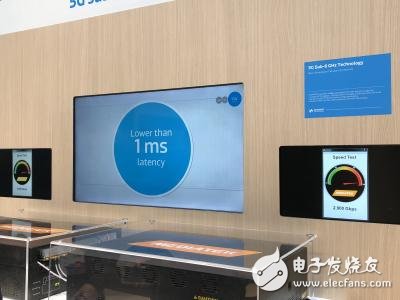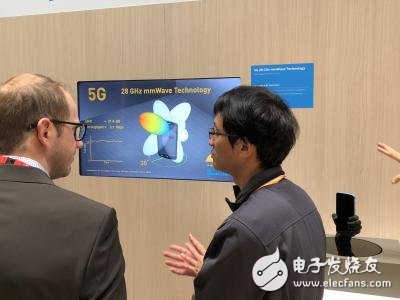2018 is bound to be the key year for MediaTek to turn around. When everyone is calling for the 5G era, MediaTek is also stepping up its layout. Recently, MediaTek reported that it will implement 5G pre-commercialization next year, and jointly launch the “5G Terminal Pioneer Program†with China Mobile to bring 5G technology into the mainstream market of smart phones. It is known from insiders that MediaTek's 5G baseband chips will start at 7nm.
"Unlike the past, MediaTek can't lose on the starting line in 5G planning. We are committed to bringing 5G technology into the mainstream market of smart phones." Dr. Zhou Yujun, senior deputy general manager and chief technical officer of MediaTek, told reporters at MWC 2018. sermon.
At the GTI Summit held at the same time of MWC, MediaTek announced that it will join the “5G Terminal Pioneer Program†led by China Mobile. The two parties will cooperate in 5G terminal application scenarios, product forms, technical solutions, test verification, product development and other fields to jointly develop 5G terminal products, promote the maturity of 5G chips and terminal products, achieve 2018 scale test, and pre-commercial use in 2019. And the goal of commercial use in 2020.
It is reported that MediaTek's first generation 5G baseband solution will be designed in accordance with 3GPP Rel-15 5G NR standard, including 5G NR, support Sub-6GHz band, independent (SA) and non-independent (NSA) network architecture, high-performance user equipment (HPUE) ) and other 5G key technologies. In addition to the Sub-6GHz band, MediaTek's 5G solution also supports the millimeter wave band to meet the needs of different operators.
At the MWC 2018 booth, MediaTek demonstrated the latest developments in 5G R&D, including the sub-6GHz prototype platform, millimeter-wave antenna modules and 5G NR enhancement technology. MediaTek 5G solutions are not only suitable for smartphones, but also for a variety of terminal formats such as the Internet of Things and data cards. Through the multiple product lines of MediaTek, 5G technology is infiltrated into different application fields.
Zhou Yujun pointed out that MediaTek has invested a considerable amount of manpower and time in 5G technology and product development, and has made good progress. This time, together with China Mobile, the “5G Terminal Pioneer Program†was launched, which means that our 5G solution has been able to meet the requirements of the world's largest operators. I believe that MediaTek's products will greatly help accelerate the maturity and popularity of the 5G ecosystem, so that consumers around the world can enjoy the convenience brought by 5G as soon as possible.

In terms of 5G product planning, Zhou Yujun said that MediaTek is committed to bringing 5G technology into the mainstream market of smart phones. Just like the Philippe P60 released by MWC, MediaTek has once again brought AI technology to the mainstream market of smart phones. Even later than Apple and Huawei, it will benefit more consumers in terms of product coverage. . At present, MediaTek is cooperating with major base station manufacturers including China Mobile to achieve pre-commercialization in 2019 and commercial target in 2020.
As for the future application scenarios of 5G, Zhou Yujun is not worried. He believes that in the preparation stage of technology, the application may not be so fast, but after the technology matures, more manufacturers will invest in product development, and naturally there will be more new application scenarios.
In terms of 5G investment, MediaTek has two to three years, and large-scale investment and development began last year. It is expected that products in this field will contribute to revenue in 2020.

Different from the 4G period, Zhou Yujun pointed out that the application of 5G chips in the future will not be limited to the mobile phone field, and will appear in more form of terminal. At present, operators including AT&T in the United States will use 5G instead of optical fiber. In the future, when the 5G capability is strong enough, it will replace some fixed-line WiFi functions.
In addition, Zhou Yujun revealed that MediaTek's 5G baseband chips will start at 7nm, and mobile phone chips will also focus on balancing cost, power consumption and complexity. After the smartphone enters the 5G phase, the relationship between RF RF vendors and basebands may change. Some devices belonging to RF vendors will be integrated in the baseband. However, in the sub-6 GHz and millimeter wave stages, the complexity of the RF device increases, and the amount of use increases. Especially in the United States and other places, because 5G mobile phones need to support 4G and 5G networks at the same time, the combination changes in Modem will be more.
Currently, most GPS antennas are right-handed polarized ceramic media consisting of ceramic antennas, low-noise signal modules, cables, and connectors. Ceramic antenna, also known as passive antenna, dielectric antenna and patch, is the core technology of GPS Antenna. The reception ability of GPS antenna depends largely on its ceramic components. Low noise signal module, also known as LNA, is the part that amplifies and filters the signal. The selection of components is also very important, otherwise it will increase the reflection loss of GPS signal, resulting in excessive noise. Cable selection should also be based on reducing reflection to ensure impedance matching
Combo GPS Antenna,2 in1 GPS Antenna,3 In 1 GPS Antenna,GPS+WIFI Antenna,GPS +4G +Wifi antenna
Yetnorson Antenna Co., Ltd. , https://www.xhlantenna.com